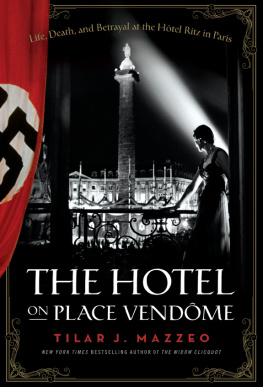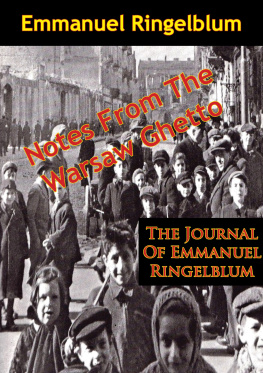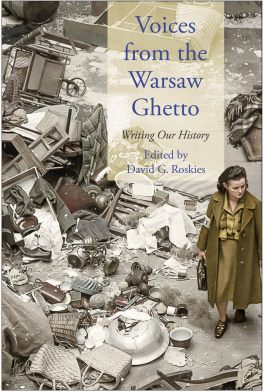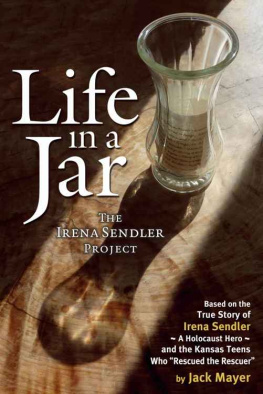Thank you for downloading this Gallery Books eBook.
Join our mailing list and get updates on new releases, deals, bonus content and other great books from Gallery Books and Simon & Schuster.
C LICK H ERE T O S IGN U P
or visit us online to sign up at
eBookNews.SimonandSchuster.com
We hope you enjoyed reading this Gallery Books eBook.
Join our mailing list and get updates on new releases, deals, bonus content and other great books from Gallery Books and Simon & Schuster.
C LICK H ERE T O S IGN U P
or visit us online to sign up at
eBookNews.SimonandSchuster.com

Gallery Books
An Imprint of Simon & Schuster, Inc.
1230 Avenue of the Americas
New York, NY 10020
www.SimonandSchuster.com
Copyright 2016 by Trifecta Creative Holdings, Inc.
All rights reserved, including the right to reproduce this book or portions thereof in any form whatsoever. For information, address Gallery Books Subsidiary Rights Department, 1230 Avenue of the Americas, New York, NY 10020.
The views or opinions expressed in this book, and the context in which the images are used, do not necessarily reflect the views or policy of, nor imply approval or endorsement by, the United States Holocaust Memorial Museum, Yad Vashem, or any other content licensor.
First Gallery Books hardcover edition September 2016
GALLERY BOOKS and colophon are registered trademarks of Simon & Schuster, Inc.
For information about special discounts for bulk purchases, please contact Simon & Schuster Special Sales at 1-866-506-1949 or .
The Simon & Schuster Speakers Bureau can bring authors to your live event. For more information or to book an event, contact the Simon & Schuster Speakers Bureau at 1-866-248-3049 or visit our website at www.simonspeakers.com.
Jacket design by Zoe Norvell
Jacket photograph Bettmann/Corbis
Author photograph courtesy of author
Library of Congress Cataloging-in-Publication Data
Names: Mazzeo, Tilar J., author.
Title: Irenas children : the extraordinary story of the woman who saved
2,500 children from the Warsaw ghetto / Tilar J. Mazzeo.
Description: New York : Gallery Books, 2016.
Identifiers: LCCN 2015051244 | ISBN 9781476778501 (hardcover : alk. paper) |
ISBN 9781476778518 (pbk. : alk. paper) | ISBN 9781476778525 (ebook)
Subjects: LCSH: Sendlerowa, Irena, 19102008. | Righteous Gentiles in the
HolocaustPolandBiography. | World War, 19391945JewsRescuePoland. | Holocaust, Jewish (19391945)Poland.
Classification: LCC D804.66.S46 M29 2016 | DDC 940.53/18092dc23 LC record available at http://lccn.loc.gov/2015051244
ISBN 978-1-4767-7850-1
ISBN 978-1-4767-7852-5 (ebook)
F OR R OBERT M ILES
Ripeness is all
Contents
Preface
Krakw, 2009
W hen I first visited Poland, sometime around 2009, I thought it would be a vacation. My brother and sister-in-law, working with the U.S. State Department, had lived in Krakw for several years already, and had lived for a time in Wrocaw before that, and had witnessed the countrys integration into the European Union and its rapid second postcommunist transformation. Their two small childrentwins and then not yet toddlerswere learning their first words in Polish, and my sister-in-law was the director of an international school located outside the city.
All three of us had grown up nominally Catholic, although none of us have ever had, I think, any particular interest in religion. Because Krakw, unlike Warsaw, escaped being bombed or razed into oblivion at the end of the Second World War, its Catholic heritage is everywhere in the Old Town architecture. It is a beautiful and in some ways still medieval city. But few areas of the city are as atmospheric as the historic Jewish quarter in Kazimierz, where tourists make pilgrimages to see Oskar Schindlers factory and to see the winding streets where parts of Schindlers List were filmed for Spielbergs motion picture. On the other hand, if you want to imagine what the Warsaw ghetto looked like in the 1940s, there is no point in going to Warsaw. Only a small percentage of it remains there. The ghetto was razed in the spring of 1943. After the Warsaw uprising a little more than a year later, the rest of the city was leveled, and only ten percent of the buildings were left standing. Warsaw is essentially modern.
The year that I visited, the school was in the final stages of a major capital project, and the campus was being developed and surrounded by fencing. My sister-in-law spent her days, she joked, largely scolding local construction crews, and she had amassed a colorful arsenal of Polish profanity. The site had been rolling farmland for years, and at one edge of the property a wood had been left to grow up in the midst of the fields and, later, scattered suburban houses. Standing together at the edge of the copse, I ventured to ask idly who owned the forest and why it had clearly been left wild for decades. After a moments pause, she let out a sigh and said to me, The trains to Auschwitz, you know, used to run not far from here. Not right here, but in the area.
There was nothing in the woods, just parkland, and in the beginning she used to walk there, she said. But the first of November in Poland is All Saints Eve, and everywhere in the country it is the tradition on that night to light candles on the graves of the dead. It was only on the first holiday at the school, when the roadside that skirted the edge of the woods was burning everywhere with candles, that she understood that something terrible had happened there.
Later, locals told her that it was 1945, at the end of the war, when the Red Army was driving back the retreating Germans. The arrival of the Red Army brought no joy in Poland. Few womenfrom schoolgirl to most ancient babcia escaped being raped by Soviet soldiers that winter in Krakw. And few Germans who encountered Soviet troops ever made their way back across the border. Across Poland, there were hundreds of nameless massacres like this one. Under communist rule, no one would have dared light a candle in the forest, but things had changed now. There were still old men and especially old women who remembered. Its everywhere here, my sister-in-law said sadly. Poland is an unmarked graveyard, and what can you do except leave the past quietly buried?
We went back to the school, and the bright voices of happy elementary school children came drifting into the corridor from all directions. I thought about the German deaths that happened here and the tracks that lead to Auschwitz and the stories of infants torn from their mothers and smashed against brick walls to murder them. I thought about my small niece and nephew and how I would kill anyone who did that to my children. My brother asked me a few days later if I wanted to see Auschwitz, and I said that I didnt.
A few years later, my sister-in-law was one of the first people to tell me the story of the female Schindler, Irena Sendleror, in Polish, where womens last names take on a feminine case ending, Irena Sendlerowa. Unconnected in space and time, those two conversations are, nevertheless, how this book started. I have never been able to separate the threads that connect Irena Sendlers story with that experience of the abandoned Polish earth and the voices of schoolchildren. As a writer, I stopped trying.
In her native Poland, Irena Sendler is a heroine today, although that is also a relatively recent postcommunist development. Her story, like so many stories across Poland, was quietly buried for decades. With her friends and a team of dedicated coworkers, Irena Sendler smuggled infants out of the Warsaw ghetto, past German guards and Jewish police traitors, in suitcases and wooden boxes. She brought out toddlers and schoolchildren through the citys foul and dangerous sewers. She worked with the Jewish teenagersmany of them girls of fourteen or fifteenwho fought bravely and died in the ghetto uprising. And, throughout it all, she was in love with a Jewish man, whom she and her friends spent the war anxiously hiding. She was a feather of a person with an iron spirit: a four-foot-eleven-inch wisp of a young woman, in her late twenties when the war began, who fought with the ferocity and intelligence of an experienced general and organized, across the city of Warsaw and across the divides of religion, dozens of average people into foot soldiers.
Next page








